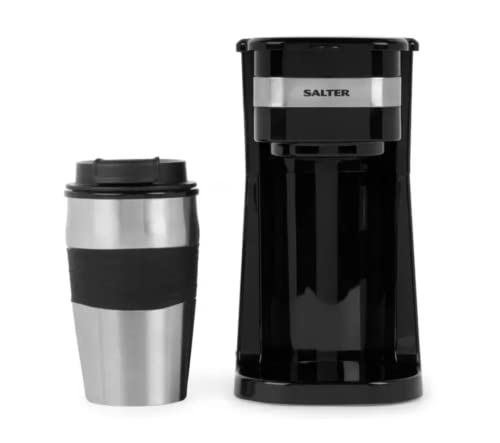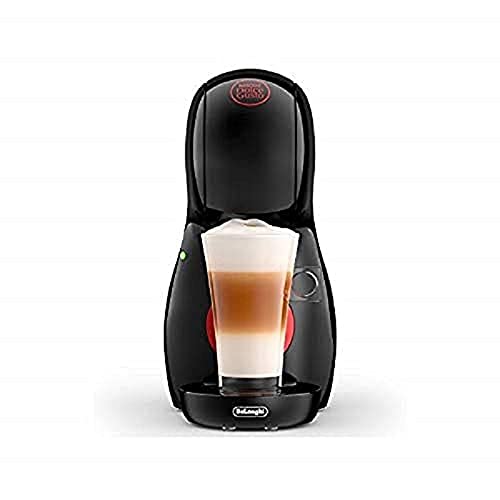Be On The Lookout For: How Coffee Machine Is Taking Over And How To St…
관련링크
본문
 How a Coffee Machine Works
How a Coffee Machine Works A coffee machine pro machine can make it simple to make a jolt of java at home. From single-cup machines to espresso machines, they can automate the process and do all the work for you.
A coffee machine pro machine can make it simple to make a jolt of java at home. From single-cup machines to espresso machines, they can automate the process and do all the work for you.Whether you're a snoozer who needs a quick jolt or an espresso lover there's a machine that's suitable for everyone. Learn how they work to brew the perfect cup.
The Reservoir
You pour water into an ice cube, and from there it flows through the rest of your coffee maker. Add your ground coffee into the portafilter. You then tamp it down, and then switch on the machine to make a cup of coffee machines ireland.
Drip coffee machines have become a standard. They're a great time-saver, and are ideal for those who need their coffee ready to go when they wake up. The device comes with a variety of features to personalize your experience. They include a clock that can be programmed and the option to use capsules or ground coffee.
Keep your reservoir clean to avoid the accumulation of limescale. This can lead to mineral deposits that can affect the flavor. After every brewing session it is important to empty and refill the reservoir with clean water. To remove staining and vinegary smells in the reservoir, fill it with warm water mixed with white vinegar. After brewing, throw away the vinegar-water mix and wash the reservoir, portafilter and K-cup pod holders with hot water with dish soap.
The Cold-Water Tube
The cold-water pipe is responsible for bringing filter-filtered, fresh water to the heating chamber at time of the brewing. When it is in the heating chamber, it's sent to the showerhead where hot water is sprayed over the coffee grounds. This is a way of infusing the coffee grounds in a way that extracts their flavor, then pouring into the carafe below.
This process should be fairly straightforward from a practical standpoint but when you hear a clicking noise this could indicate blockages within the tubing. They can be cleared by cutting the standard household water tubing and attaching it to the inlet fitting on the coffee machine, and using an adapter in the event that it is required.
The one-way valve is located in the bucket opening or inside the aluminum tube. It is responsible for pulling cold water into the tubing after the water reservoir has been emptied and releasing boiling hot water back into it when the tubing is ready be used. The valve could produce a sound when it is clogged with mineral deposits or dirt. Fortunately, this is simple to get rid of using a small instrument or toothpick.
The Hot-Water Tube
There's a tiny aluminum tube in your coffee maker which connects the reservoir and the shower head faucet (also called the showerhead). When you press the button to make a cup the heating element is activated, and water begins to flow through the machine. The tube is lined with insulation to keep the water warm as it moves from one section to the next.
When the hot water has reached the reservoir, sensors turn it off and on to ensure it stays at the ideal temperature of 195 to 205 degrees Fahrenheit for coffee extraction. Some machines come with the ability to measure temperature to ensure that the water is always at the ideal temperature.
Then, the water transforms into steam that rises through an opening in the bucket and passes over the coffee's coarse grounds in a filter basket on top of the machine. The heated water soaks the grounds, releasing the flavor before pouring into the carafe. Certain models come with an infusion system that saturates the grounds with water at low pressure before it reaches full pressure, further enhancing the extraction process.
The Faucet
Coffee machines are small machines that work to turn the water they drink into a cup of hot amazon coffee machine. Knowing a little bit about how they work will help you understand why they are so popular, and also why it's important to keep them clean and well-maintained.
The faucet inside a coffee machine is basically a shower head that sprays water that is carried through the hot-water tube onto the coffee grounds. The water is pumped through a perforated disc known as the drip zone, and the rate that it falls over the grounds determines the amount of moisture released into the coffee.
Certain models with advanced features come with a built-in grinder so that the cheap coffee machine beans are freshly ground prior to when they are put into the heating chamber. You can program them to brew your coffee before you get up to ensure that it's ready when your alarm goes off. They can be fitted with an application that lets you select a drink and customize the ratio of coffee and milk.
The Drip Area
The coffee maker is easy to use, however it does much to transform water into an amazing cup. This section covers all the components of the machine that work.
There's a reservoir bucket which holds the water that you pour in at the beginning of the cycle, and a white tube that runs from the base of the reservoir to the drip area. This tube's purpose is to carry the hot water that will be sprayed onto your lawn.
Then, there's a shower head that receives the hot water that is carried by this tube and sprays it onto the beans you've ground. This is where the brewing process gets underway and here the flavor of your beverage will begin to emerge. You can also experiment with the end-result of your brew by changing variables like brew duration and temperature (some coffees require longer or higher temperatures to get their full flavor). The final product will flow through a small disc of plastic called the drip zone, and then into your cup.
The Heating Element
Most coffee makers have a heating element that consists of a coil of resistive wires that heat up when electricity is applied. The coil is protected by a switch that switches the power on and of. The coffee machine has other components, such as sensors and fuses which cut the current when needed.
The aluminum water tube that carries hot water from the reservoir to the faucet is connected on both ends to the heating element. The heating element that is resistive is sandwiched between the tube and a warming plate that is clad in white heat-conductive grease.
Drip coffee machines make one cup at a time, which is ideal for those who need quick and simple coffee without the hassle of filling a carafe. These machines are also great for those who don't drink much coffee or families with different wake-up times. However, if you like stronger drinks like cappuccinos or lattes, espresso machines are the way to go. They utilize pressure to force the water through the ground, which extracts the oils that give your drink its flavor.
The One-Way Valve
A one-way check valve is a valve that allows fluid to flow in one direction. The valve is located in the hole inside the reservoir or inside the aluminum tube that transports the water under the heating element that is resistive. This valve stops cold water from entering the bucket, while forcing bubbles of hot water to rise through the tube and get to the faucet.
It's possible for the one way valve to become blocked. This could happen if you use the machine for a prolonged period of time, or if mineral deposits accumulate in the valve. This could cause the coffee maker to stop producing coffee making machine (http://www.Uyduturk.com/proxy.Php?link=https://www.coffeee.uk). If this occurs, the valve needs to be cleaned by pouring hot water on it, and then remove the base of the machine.
The coffee machine is a clever device that can turn a handful or grounds and a cup of water into a piping hot cup of java. There are a variety of advanced features that are available on these machines that allow you more control over your drink.
The Power Cord
The power cord is what plugs into the wall and provides the energy for this machine to run. It is black and grounded using a female C13 connector that plugs into the standard US outlets. Inside the coffeemaker you can see a special high-temperature wire which goes to the thermostat and switch controls for both the boiler and carafe heater. The wire is a white glass braid or similar insulation. It's not a surprise that the designer chose to arrange the wiring in a way that heat is kept away from the power cord.

